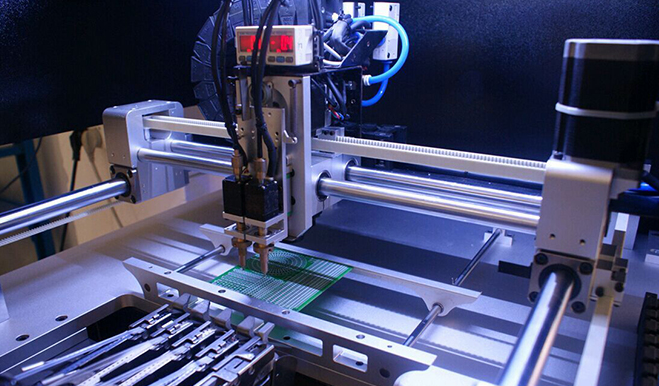Flexible circuit boards (FPC) have become one of the fastest growing sub-sectors in the printed circuit board industry. The precautions for manual welding of FPC circuit board PCB are introduced below
Precautions for manual welding of FPC soft board PCB
(1) The contact method between the soldering iron tip and the two welded parts
Contact position: The soldering iron head should be in contact with the two welded parts (such as solder feet and pads) to be connected to each other at the same time. The soldering iron is generally inclined at 45 degrees. Avoid contact with only one of the welded parts. When the heat capacity of the two welded parts is very different, the tilt angle of the soldering iron should be adjusted appropriately. The smaller the tilt angle between the soldering iron and the soldering surface, the larger the contact area of the welded part with the larger heat capacity and the soldering iron will increase, and the thermal conductivity will be strengthened.

For example, the inclination angle of LCD welding is about 30 degrees, and the inclination angle of welding microphones, motors, speakers, etc. can be about 40 degrees. Two welded parts can reach the same temperature in the same time, which is regarded as an ideal heating state.
Contact pressure: A slight pressure should be applied when the soldering iron tip is in contact with the welded part. The strength of heat conduction is proportional to the applied pressure, but the principle of not causing damage to the surface of the welded part.
(2) Supply method of welding wire
The supply of welding wire should master three essentials, namely supply time, location and quantity.
Supply time: In principle, when the temperature of the weldment reaches the melting temperature of the solder, the solder wire is immediately delivered.
Supply position: It should be between the soldering iron and the welded part and as close to the pad as possible.
Supply quantity: It depends on the size of the welded part and the pad. After the pad is covered by the solder, the solder can be higher than 1/3 of the diameter of the pad.
(3) PCB soldering time and temperature setting
A. The temperature is determined by actual use. It is most suitable to solder a tin point for 4 seconds, and the maximum is no more than 8 seconds. Observe the soldering iron tip at ordinary times. When it turns purple, the temperature is set too high.
B. For general direct insertion of electronic materials, set the actual temperature of the soldering iron tip to (350-370 degrees); for surface mount materials (SMC) materials, set the actual temperature of the soldering iron tip to (330-350 degrees).
C. Special materials require special setting of soldering iron temperature. FPC, LCD connectors, etc. use silver-containing tin wires, and the temperature is generally between 290 degrees and 310 degrees. D. For soldering large component feet, the temperature should not exceed 380 degrees, but the power of the soldering iron can be increased.
(4) Precautions for welding
A. Before welding, observe whether each solder joint (copper skin) is smooth and oxidized.
B. When soldering items, be sure to spot the solder joints to avoid short circuits caused by poor wire soldering.
1) Because polyimide is hygroscopic, the circuit must be baked before soldering (for 1 hour at 250°F).
2) The pad is placed on a large conductor area, such as the ground plane, power plane or heat sink, and the heat dissipation area should be reduced. This limits the heat dissipation and makes welding easier.
3) When manually soldering pins in dense places, try not to continuously solder adjacent pins, but move the soldering back and forth to avoid local overheating.
4) Shorten the connection between high-frequency components and reduce EMI interference. Components with heavy weight (such as more than 20g) should be fixed with brackets and then welded.
5) The arrangement of PCB components is as parallel as possible, which is not only beautiful but also easy to solder, and is suitable for mass production. When the FPC circuit board is heated for a long time, the copper foil is easy to expand and fall off. Therefore, avoid using large-area copper foil.